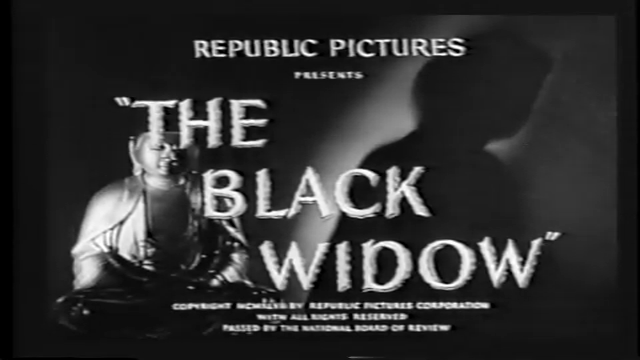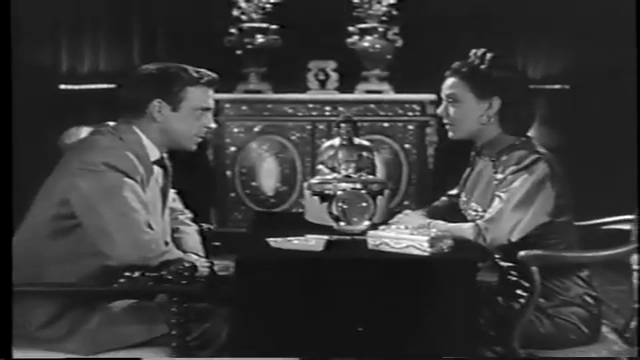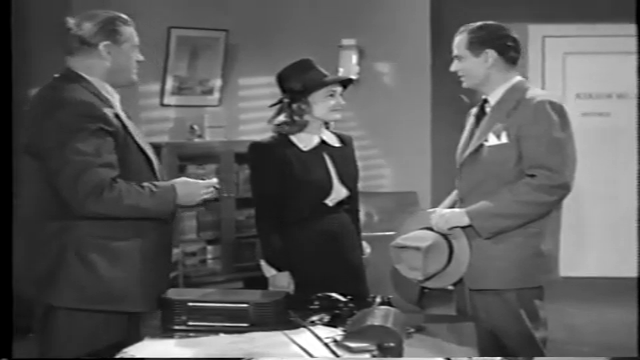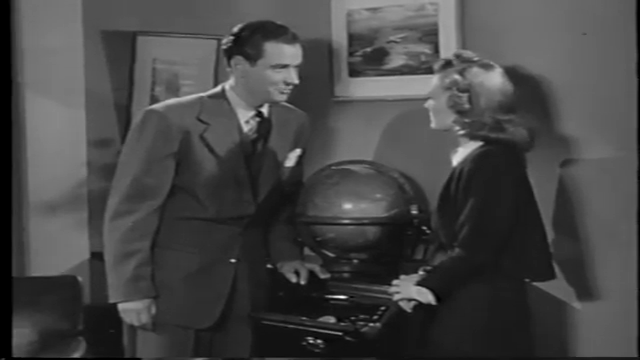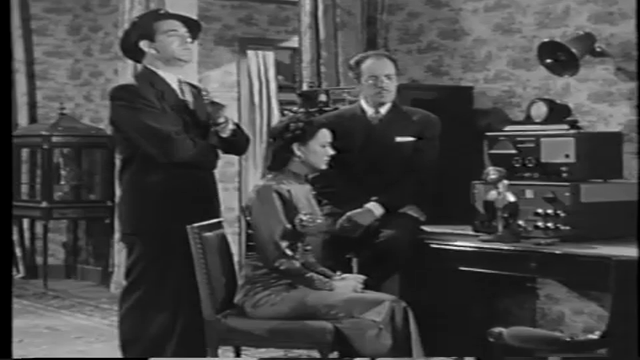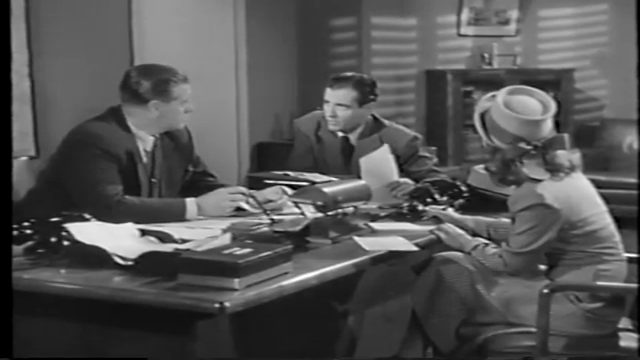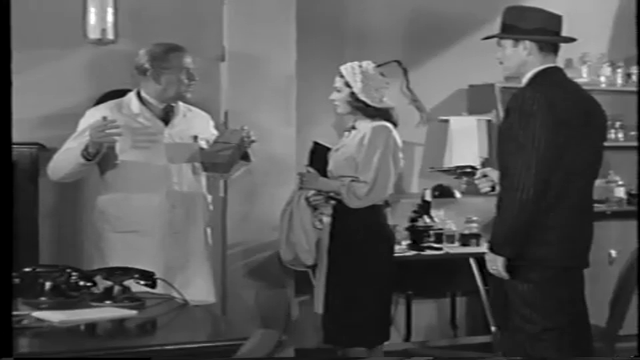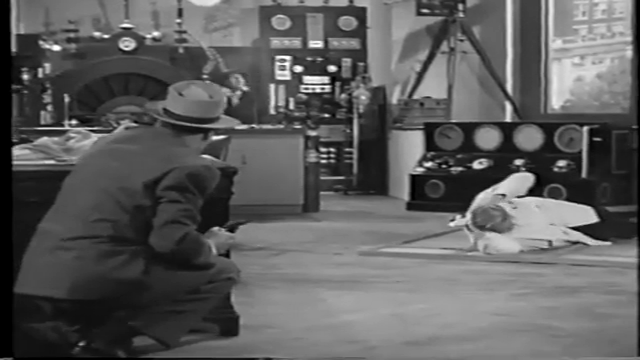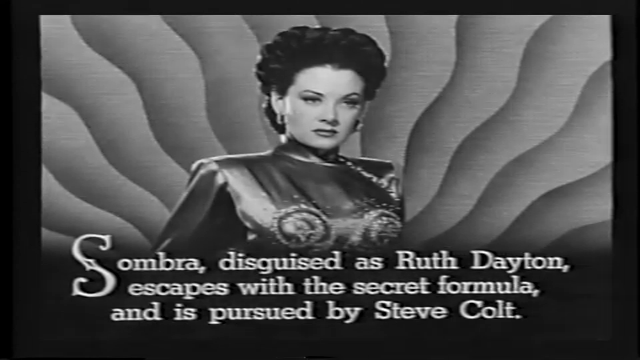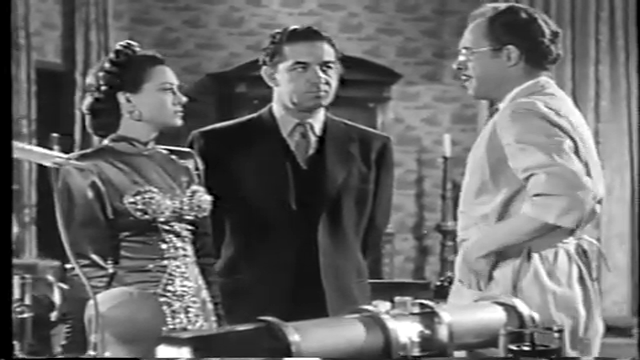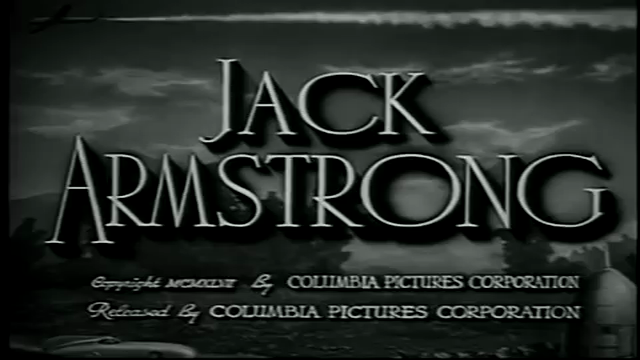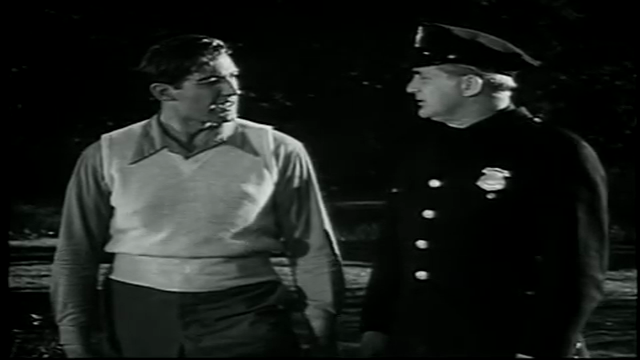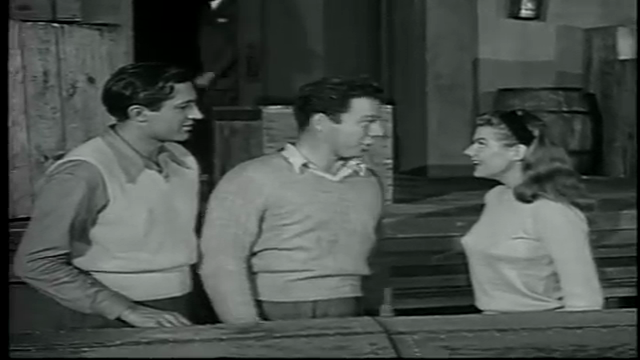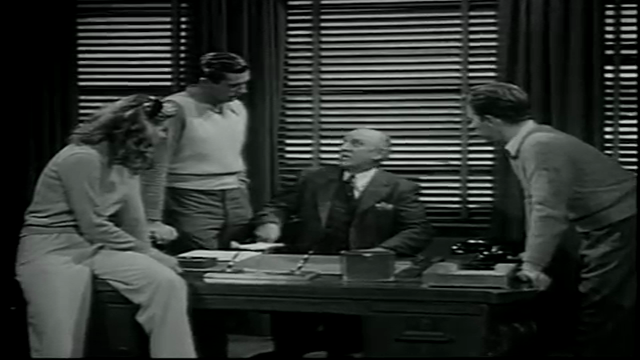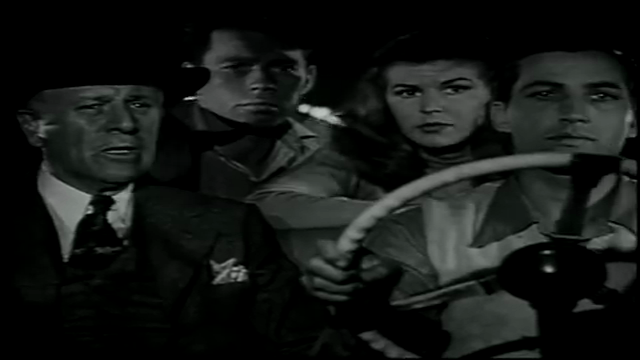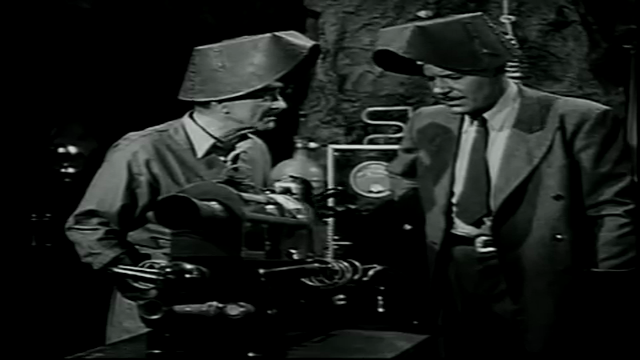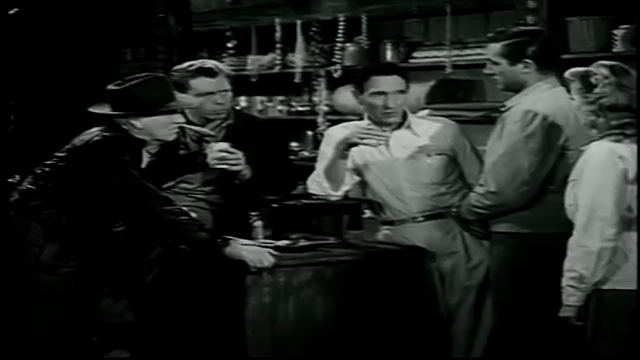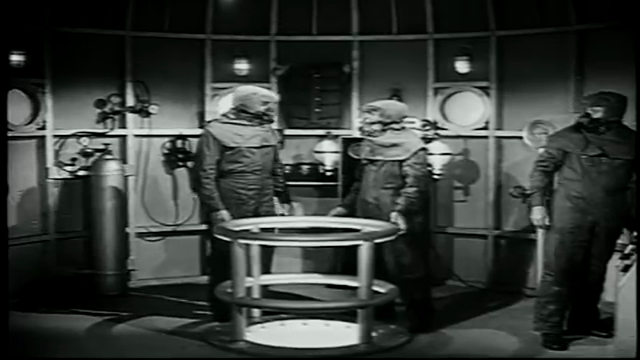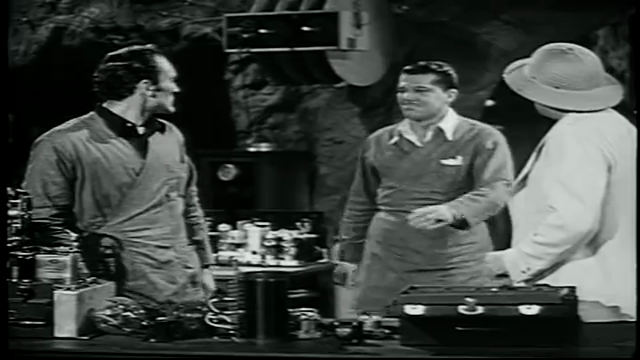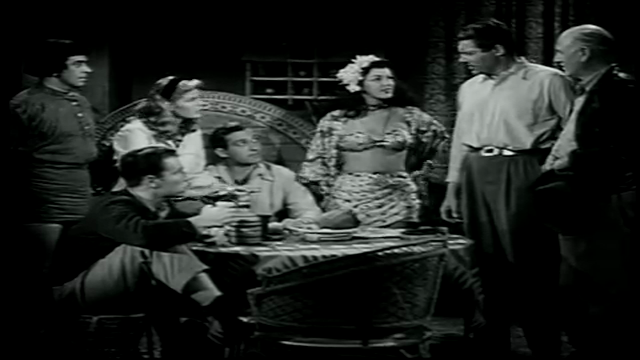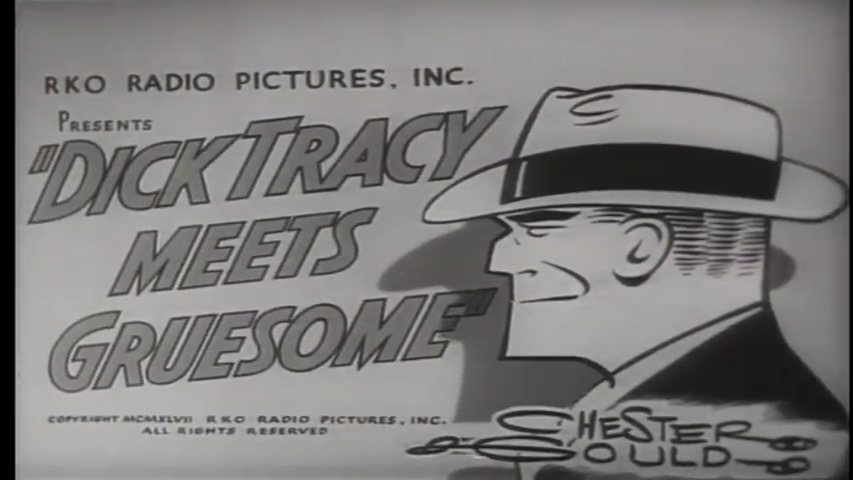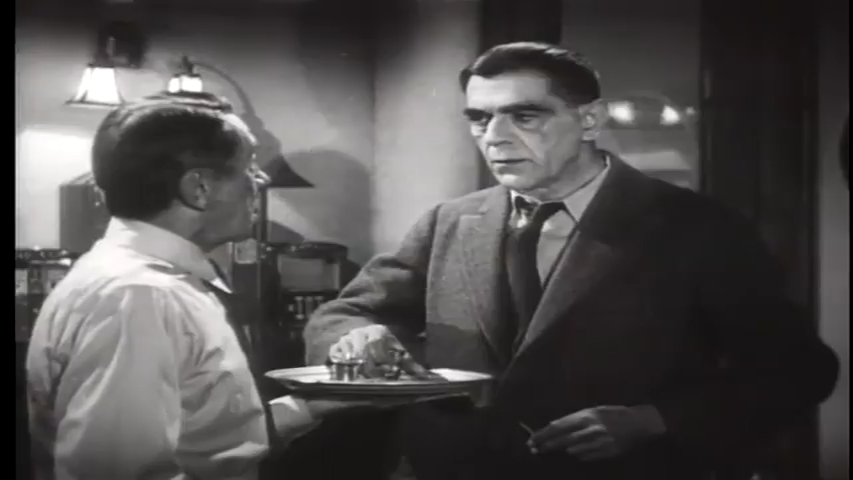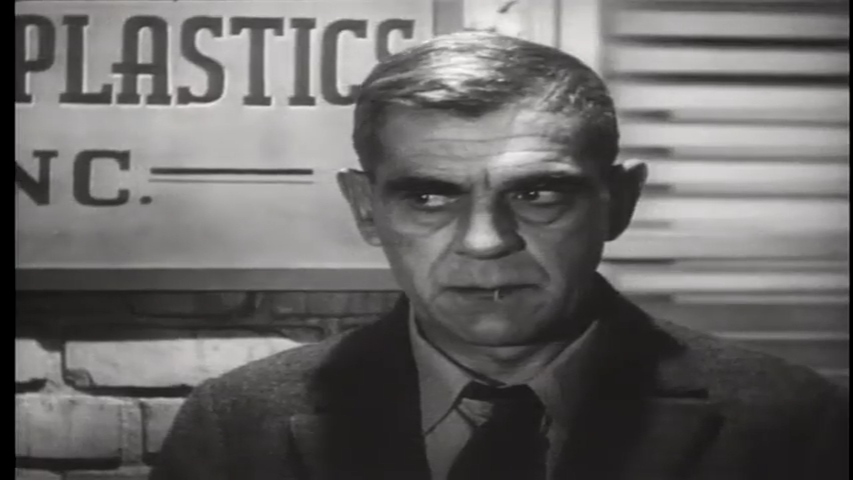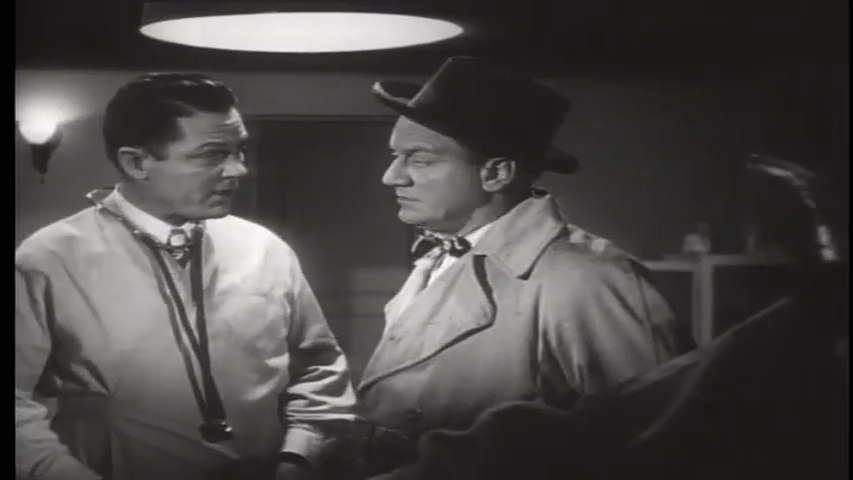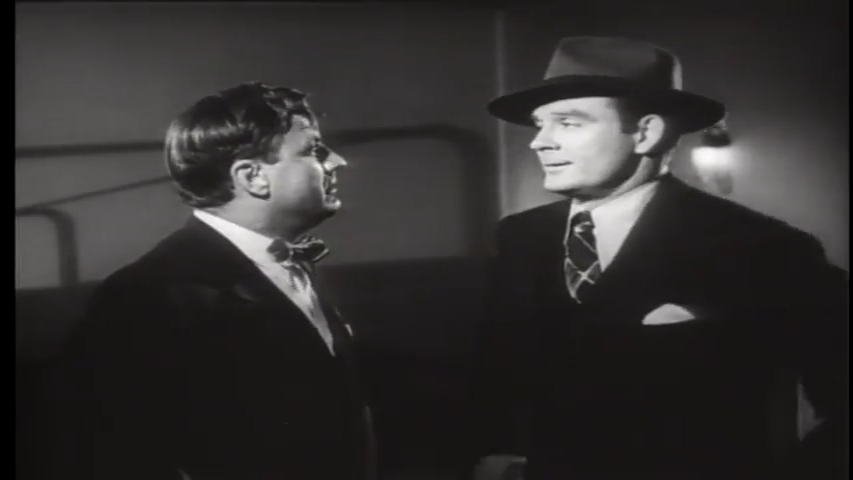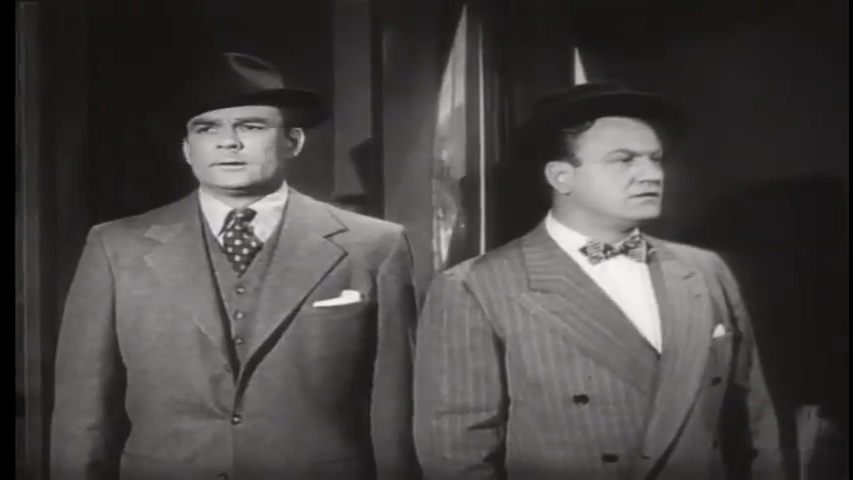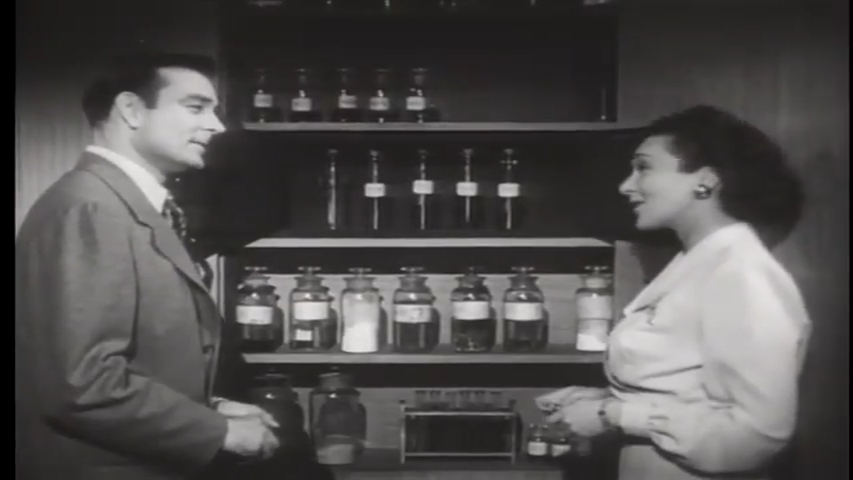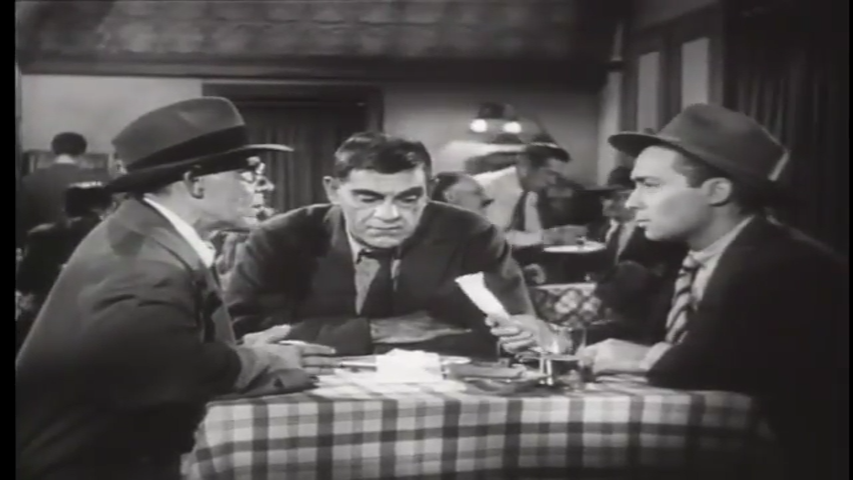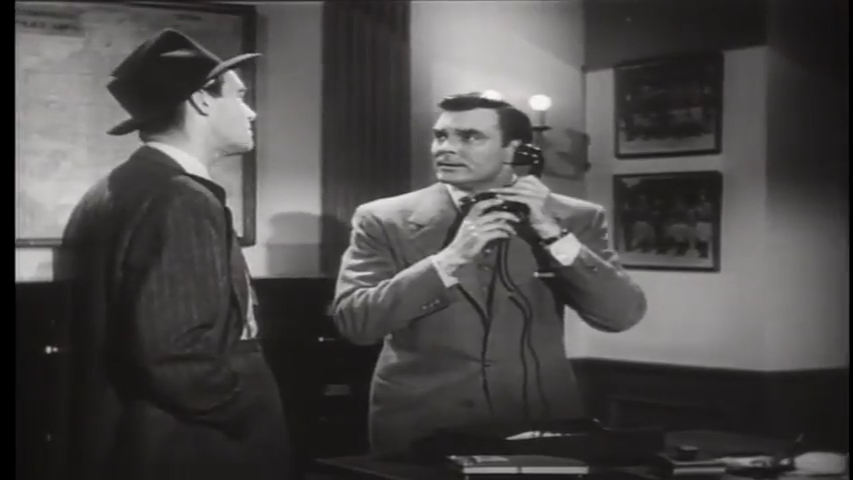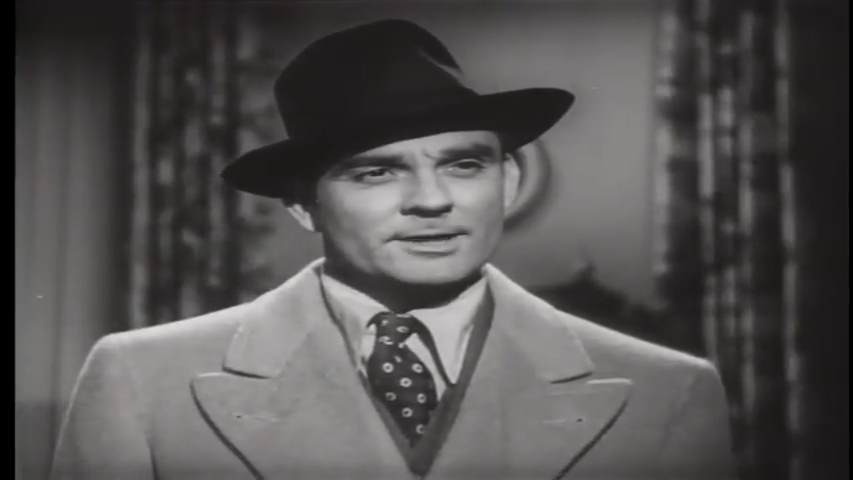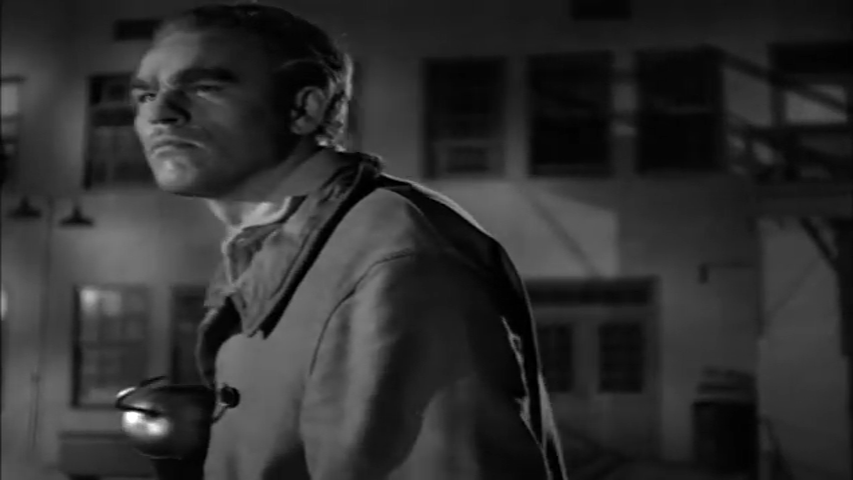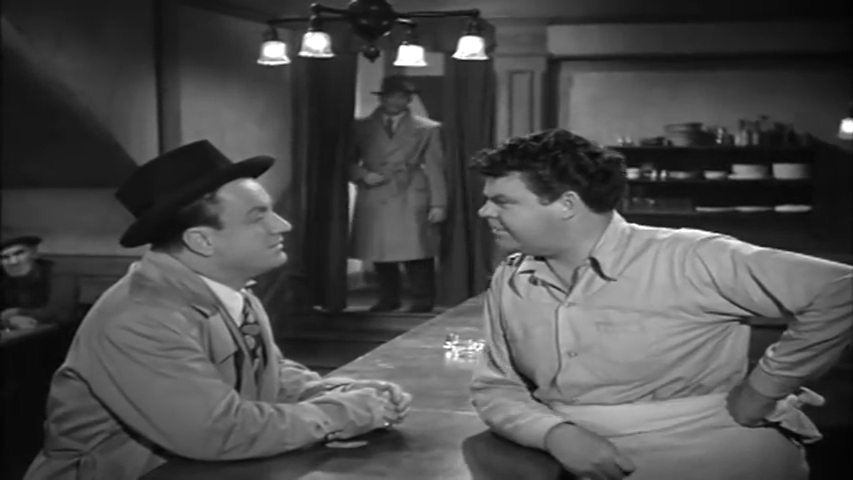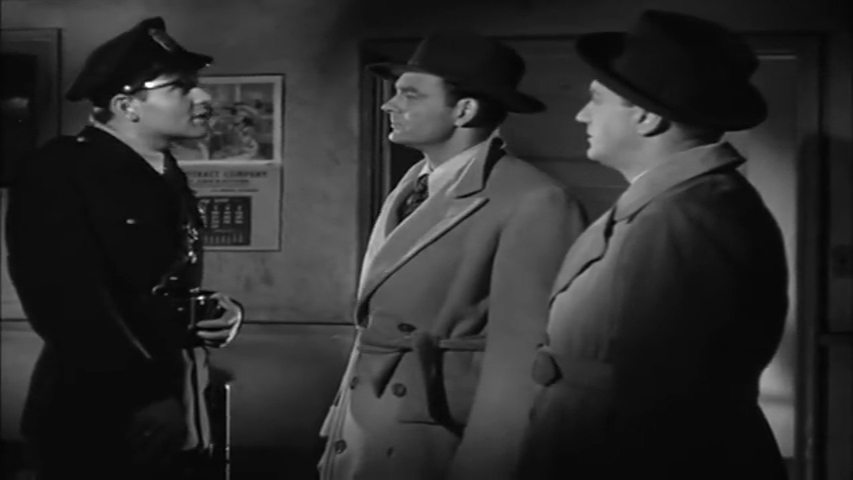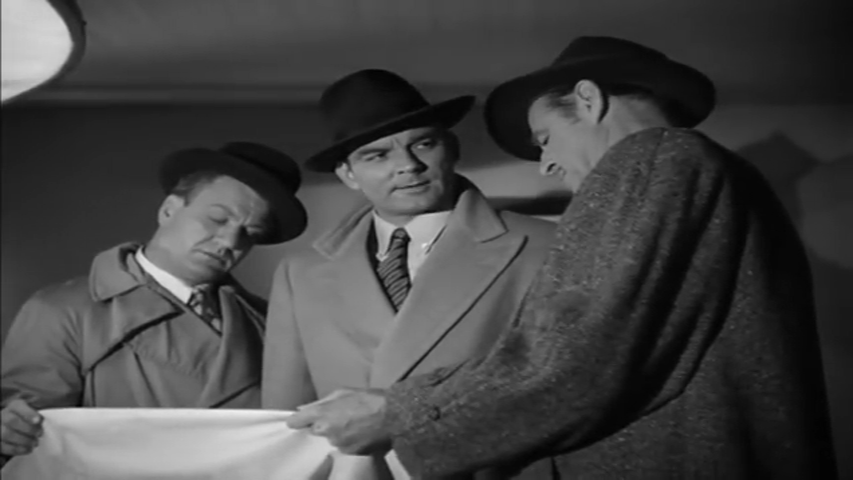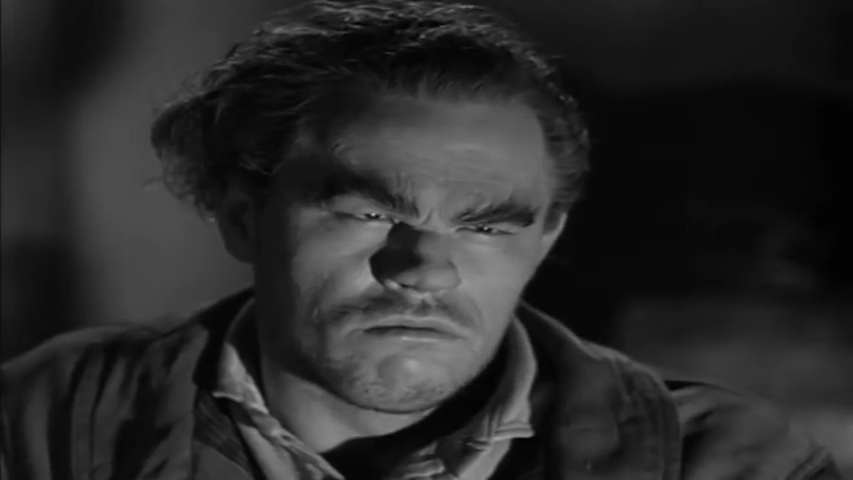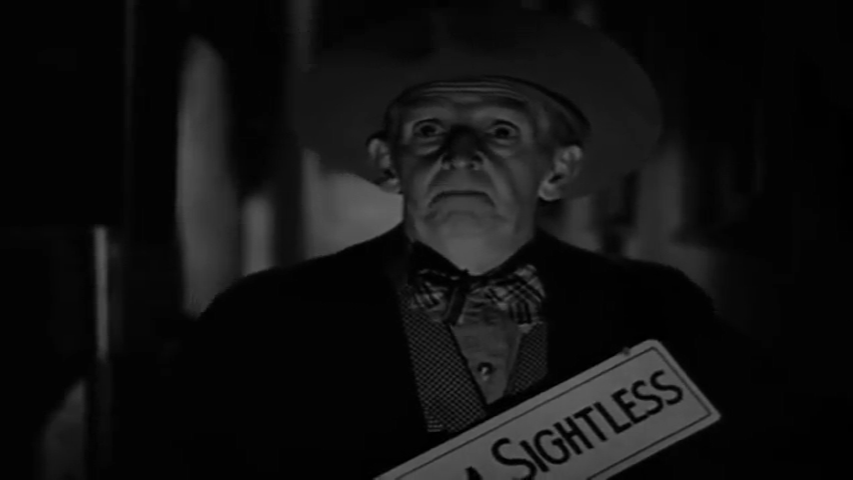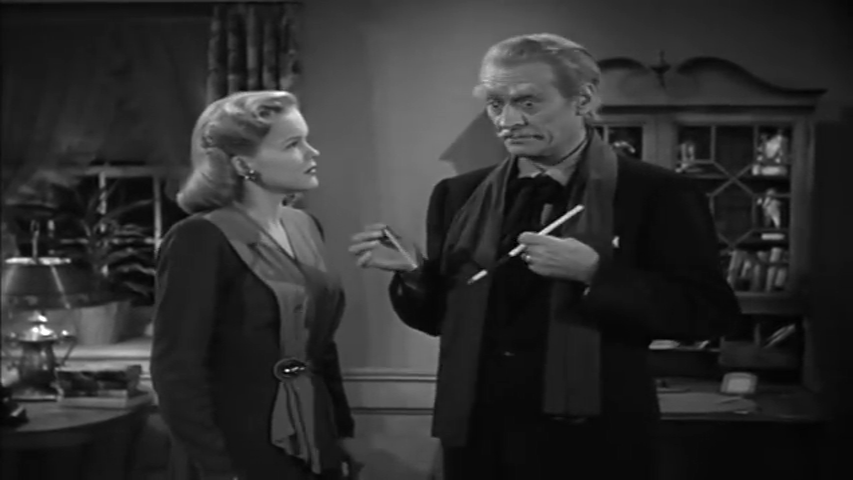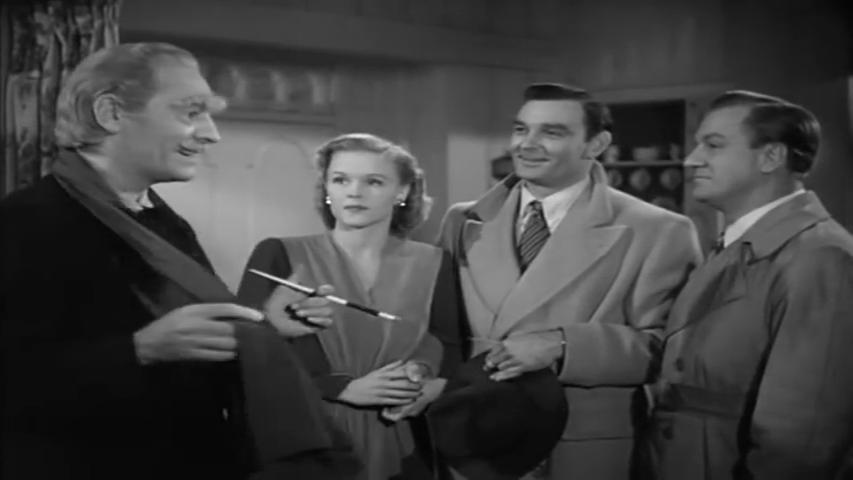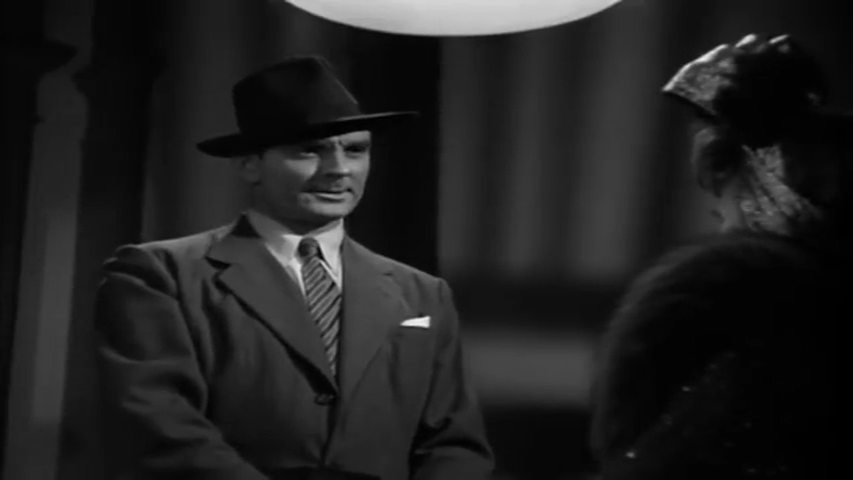-
#449 – The Black Widow (1947)
The Black Widow (1947)
Film review #449
Directors: Spencer Gordon Bennet, Fred C. Brannon
SYNOPSIS: A series of murders involving poison from a venomous spider leads the editor of the Daily Clarion newspaper to hire amateur criminologist Steve Colt to investigate. He is joined by Joyce Winters to investigate the work of the criminal known only as the “black widow,” who is attempting to steal a prototype rocket project for undoubtedly evil ends…
THOUGHTS/ANALYSIS: The Black Widow is a 1947 serial comprised of thirteen chapters. In the opening, we see a man fall victim to a venomous spider bite, orchestrated by Sombra, a foreign agent disguised as a fortune teller. Adding this man to her killing spree, the Daily Clarion newspaper aims to uncover the secrets of this killing spree by hiring amateur criminologist Steve Colt to unravel the mystery. The story is a very familiar setup, with the basic premise being the protagonist’s having to foil the antagonist’s schemes through car chases, fistfights and the like. It all feels very familiar, and the plot never really progresses beyond this back and forth. A major part of the plot revolves around Sombra trying to get a hold of a prototype rocket project, but it doesn’t really go anywhere or add anything to the story. While almost all of the serials follow the same format and low budget production, the best ones are able to provide something that is reasonably unique to help drive the story and set itself apart from other serials, but The Black Widow doesn’t really have anything; no, an unconvincing plastic spider coming out of a chair to poison it’s victims once or twice doesn’t count.
The characters don’t really help give the serial an original edge. Steve Colt as an “amateur criminologist” is a role that a lot of the serial leads have. It’s a wonder how so many “amateur” criminologists are able to bring down crime bosses with little to no help from the police. Joyce Winters provides the “lead” female role, which is to say she has a small part to play in the serial other than being kidnapped (although she does that too), and it’s good to see more than one female character playing a role in the serial. Sombra as the villain is cold and ruthless, but spends a lot of time just giving orders. Her ability to put on masks and disguise herself as other people seems to be otherworldly, but lacks explanation and justification. Carol Forman, the actress who played Sombra, often played the role of female serial villain, and played a similar character in the 1948 Superman serial, where she played the criminal mastermind the “Spider Lady.” The rest of the character don’t make much of an impact on viewers, and are quickly forgettable. Sombra’s Father, King Hitomu, appears through the use of a device that apparently transports him across the world from presumably east Asia somewhere (although the characters are white they are obviously made up to “look” Japanese, as a lot of serial villains were in response to their role against the U.S. in WWII). Having a transportation device that can take you across half the world instantaneously should probably be more of a deal than the serial makes it out, using it so Hitomu can appear, give his orders, and then disappear again. The plot of the experimental rocket weapon just seems to pale in comparison to such a device. His motivation also just seems to be limited to “conquering the world,” which doesn’t really say anything about his character.
Released in 1947, the serial was released after the peak of the format’s popularity, and the continually recycled tropes had mostly run their course as Hollywood was turning away from low budget serials to feature films that could be more experimental and bold in the post-war boom. That said, with directors Spencer Gordon Bennet and Fred C. Brannon attached; two of the veteran serial directors, the action scenes and camerawork are decently co-ordinated. The acting is often pretty rough, and the dialogue unnatural, as these serial s often try and recap past events through dialogue for people that have missed chapters. There’s some inventive setups and scenery, with hidden switches, and imaginative devices that the villains use to implement their schemes. Overall, The Black Widow benefits from the experience of it’s production staff, but fails to come up with an original story or interesting characters to justify going through all thirteen chapters.
-
#408 – Jack Armstrong (1947)
Jack Armstrong (1947)
Film review #408
Director: Wallace Fox
SYNOPSIS: When a valuable shipment and scientist Vic Hardy are kidnapped, young Jack Armstrong along with his friend Billie, his Sister Betty, and their Uncle Jim Fairfield, all attempt to find and rescue him. They eventually track him to an island in the Pacific, where an evil scientist has hidden Hardy away in a secret laboratory where he is building a weapon that could enslave the world. Jack and his friends must deal with the native islanders and the scientist’s henchman before the weapon is completed and the world is at their mercy…
THOUGHTS/ANALYSIS: Jack Armstrong is a 1947 movie serial based on the radio play of the same name.The serial opens up with young Jack Armstrong and his friend Billie along with his sister Bettie working on a car at the Fairfield aviation company, which Billie and Bettie’s Uncle Jim owns. Almost as soon as the serial starts, a hit and run takes place outside the Fairfield office, so Jack and Billie jump in their car and give chase. This car of theirs is a huge beast that just looks like a big steel box put over a normal car. Nevertheless, it gives the opportunity for the serial to open on an action-based note, and to entice viewers to stay and come back for the rest of the serial’s chapters. After Jack and Billie catch the driver, their car is never seen or mentioned again, which is a bit naughty opening with it and thus giving the impression you will see more of it in the next chapters.
One of Jim’s employees, Hardy, is monitoring some strange signals in the ionosphere. One of Jim’s customers named Pearce overhears this, who is working for the gang making those signals for some evil scheme, and has Hardy kidnapped so he can be forced to help with their plan. Jack and the gang track Hardy down to an island in the Pacific Ocean, which they travel to, but their plane is shot down on approach. The rest of the serial takes place on the island, where they meet the owner of a trading outpost named Grood, who is secretly the mastermind of the evil scheme to rule the world through building a weapon and deploying it in the atmosphere. The story involves Jack and the gang dealing with Grood’s henchman, as well as the native tribes that inhabit the island, and later on Pearce when he shows up on the island still pretending to be our heroes friends.
-
#397 – Dick Tracy meets Gruesome (1947)
Dick Tracy Meets Gruesome (1947)
Film review #397
Director: John Rawlins
SYNOPSIS: A bank robbery that ends in a murder means that homicide detective Dick Tracy gets put on the case. The robbery, which involved using a special gas that froze everyone in place while the robbery was carried out. Meanwhile, the criminal known as Gruesome, who carried out the robbery, is still at large and continuing to carry out crimes…
THOUGHTS/ANALYSIS: Dick Tracy Meets Gruesome is a 1947 feature film, as well as the fourth and final film in the Dick Tracy film series. The film starts off with a criminal named Gruesome getting out of prison and going to see fellow criminal Melody about a job. He visits a scientist where he stumbles upon a gas that he inhales. As he tries to make it back to Melody at the bar, he falls unconscious at the door, where he is picked up by Pat Patton, detective and Dick Tracy’s partner. He is seemingly dead, but he wakes up in the morgue and knocks out Pat before he escapes. Gruesome gets a hold of the gas again and uses it to rob a bank by freezing everyone inside. Coincidentally, Dick Tracy’s girlfriend Tess is in the bank and witnesses the robbery, as she is in a phone booth and unaffected by the gas. When a guard is shot and killed by the robbers as they flee, Dick Tracy becomes involved in the case and attempts to track down the robbers before the press print the story and they flee town. The content is again very similar to the previous three films in the series, with a balance between investigation and action. This film seems to pack a lot more content into it though, and definitely moves around to focus on a lot more elements. As such I don’t think it flows quite as smoothly as the others, but it’s not too much of an issue. One other main difference is the more science-fiction element of the freezing gas, which is something which isn’t a part of the previous films. It does stand out from the noir-crime and somewhat down-to-earth style of the film, but then again it still follows its comic book roots with the dramatic angles and silly naming of characters, so it’s hardly a world-breaking element.
The villain this time is Gruesome, a man who has recently come out of prison (whether he has been released or escaped is left ambiguous) and immediately gets back into a life of crime. Gruesome is portrayed by Boris Karloff, the famous horror movie actor best known for his role in 1931′s Frankenstein as the Monster. He obviously knows how to play a good villain; with his cold, threatening stare that speaks more than any words that he could say. Pat Patton even exclaims that Gruesome looks like Boris Karloff, which is a bit of an odd fourth-wall-breaking moment. However because of his recognisable appearance, Gruesome is probably the most memorable of the Dick Tracy villains. In terms of the other characters, Ralph Byrd returns as Dick Tracy, along with familiar characters Pat Patton and Tess Trueheart. The minor characters, in keeping with the style of these films, all have names relating to their profession, such as the scientist Dr. A Tomic. It’s a bit silly, but as mentioned it is in keeping with the original comic strip, and finely balances the gritty crime-noir with a mixture of slapstick comedy and comic-esque camera angles.
Overall, Dick Tracy meets Gruesome continues the work that the previous films did, without much else to say. The addition of a more science-fiction focus changes things up a little, although it does feel a little out of place compared to the rest of the series. Boris Karloff provides a menacing villain that is memorable and interesting to follow, and while the series’ trademark of mixing action, investigation, noir and comedy elements probably veers more towards a light-hearted approach than its predecessors, it still keeps close to the successful formula it has hit on of blending these elements of different genres into a short but entertaining watch.
-
#395 – Dick Tracy’s Dilemma (1947)
Dick Tracy’s Dilemma (1947)
Film review #395
Director: John Rawlins
SYNOPSIS: A robbery at a vault full of furs also leaves one person dead and a suspicious insurance claim. Homicide detective Dick Tracy and his partner Pat Patton are put on the case where they investigate the involvement of a man known only as “the Claw”…
THOUGHTS/ANALYSIS: Dick Tracy’s Dilemma is a 1947 film and the third Dick Tracy feature film. The film opens up with a robbery being committed on a safe at a storage facility. The watchman attempts to intervene, but later when it is found that he is missing, homicide detective Dick Tracy and his partner Pat Patton are put on the case and find the safe, which was supposed to be full of imported furs, empty. Tracy investigates the involvement of the vault’s insurance company, as well as the involvement of a man known only as “The Claw”. The story is very similar to the other two films of the series, with a murder investigation being the primary thread running through the film, with lots of little investigations and twists tying into it. The runtime of sixty minutes is again similar to its predecessors, which keeps everything streamlined and without unnecessary filler. It is well paced with a variety of locations and colourful characters to keep things interesting.
The most notable element of this film compared to the others is the return of Ralph Byrd to the role of Dick Tracy in place of Morgan Conway from the first two. Byrd starred as Tracy in the four movie serials released between 1941 and 1947, and his return is very much welcome. While Conway probably looked more like the Dick Tracy from the comics, Byrd has a much more likeable charm and personality, and just seems to fit in better with the other cast members. The rest of the cast also has plenty of personality, and embody the type of comic book characters of the original format, with the ridiculously cartoony names and all. Tess Trueheart as Tracy’s girlfriend returns, and is a better fit with Byrd’s Tracy, as she always looked far too young to be Conway Tracy’s girlfriend. The English theatre actor Vitamin (see what I mean about cartoony names?) as some comic relief and eccentricity, along with the accident prone Pat Patton. The Claw himself is also fairly menacing, but is very similar to the other villains in the earlier films. The film balances the gritty crime-noir aesthetics with high contrast lighting and dramatic angles with these comic-esque characters that would appeal to a younger audience. Again, the film balances these two genres very well without undermining one another.
There is not much else to say about this film that I didn’t mention in my reviews of the earlier ones. Dick Tracy’s Dilemma, following its predecessors, has hit a sweet spot balancing crime-noir with a comic book style that can appeal to a wide range of viewers (which is what you want in a feature film). It doesn’t change much from the previous films, and sticks very much to the sixty minute runtime, but again it doesn’t need to really innovate if it already has a successful formula. The return of Ralph Byrd to the role of Dick Tracy is certainly the only tweak the formula needed to make. Another solid entry in the series, even if it lacks anything innovative.
